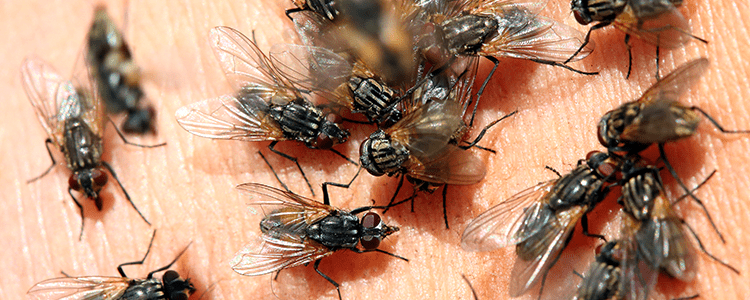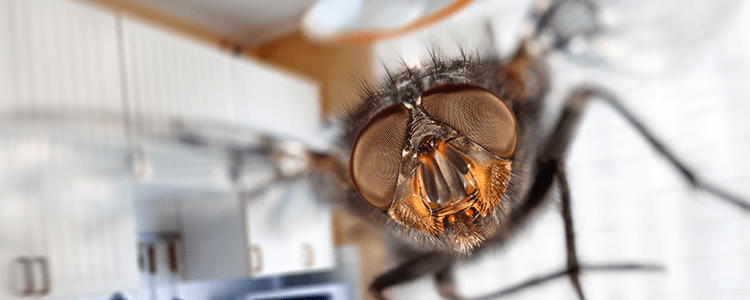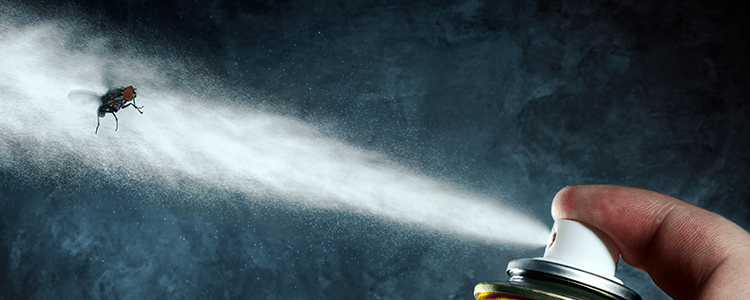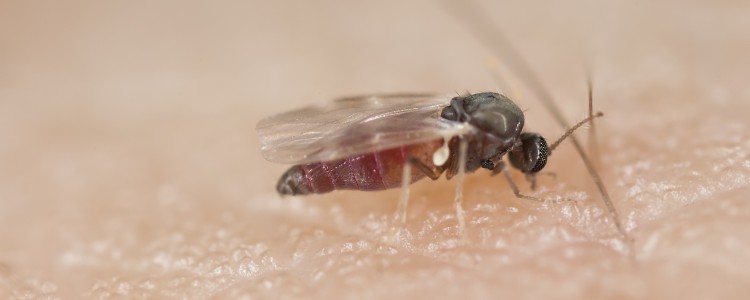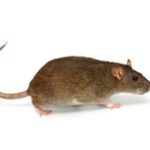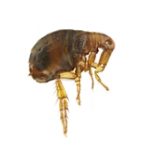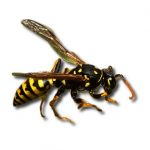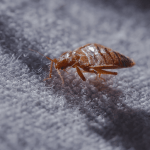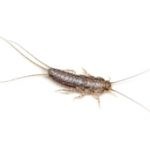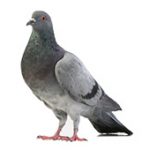How to Identify Types of Flies in House UK
Many types of flies inhabit homes and gardens in the UK. Identifying these flies is essential for effective insect control, particularly when dealing with infestations. Here’s what you need to know about the most commonly found types of British flies, how to identify them, and why they might be increasing in number.
There are numerous separate UK fly species each of which has a different appearance. The majority of flies have bean-shaped bodies, often dark brown in colour. True flies are distinguished by other insects with “fly” in their names (such as dragonflies, butterflies and fireflies) by their wings. Flies have a single pair of transparent flight wings, attached to the mesothoracic part of their body. In contrast, most other insects have a dual pair of wings and are rarely transparent. They also have compound eyes.
Fly Types in the UK & Health Hazards
House Fly (Musca domestica)
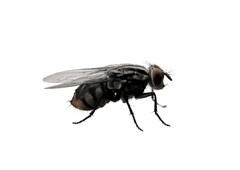 One of the most widespread indoor pests, house flies are medium-sized, grey, and feature four dark stripes on the thorax. They are typically found near food, waste bins, and pet litter.
One of the most widespread indoor pests, house flies are medium-sized, grey, and feature four dark stripes on the thorax. They are typically found near food, waste bins, and pet litter.
The house fly carries more than 100 pathogens, including salmonella, typhoid, tuberculosis, anthrax, cholera and dysentery. House fly is an umbrella term for two different species of flies. Both share the same appearance. House flies in the UK are mostly grey and have a distinct dual stripe on their thorax. The only difference between them is the size—the Common house fly reaches 5mm up to 8 mm in length, while the lesser house fly can reach between 3mm and 6mm in length.
Bluebottle Fly (Calliphora vomitoria)
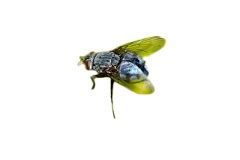
Larger than house flies, bluebottles are metallic blue and often signal the presence of decaying animals or waste. Even though bluebottle infestations are infuriating, these insects can also be beneficial to humans. Sterilised larvae of the bluebottle fly are used in maggot therapy. The larvae are introduced into wounds of a human or animal where they eat the dead tissue and leave the healthy one intact.
Image by: Benjamin Watson
Horse Fly (Hybomitra micans)

It has a painful bite that can cause infection in animals. They bite humans as well, though their bites rarely result in infections. They have a scissor-like mouth and pointed rear end. Horse flies are dark brown in colour, with shiny green or black eyes. They are also bigger in size and can reach up to 25mm long. They spread various blood-borne diseases and can suck up to 300mm of blood from an animal a day.
Image by: James Lindsey
How to identify a fly in the UK?
Identifying a fly in the UK involves assessing its size, colour, wing shape, habitat, and behaviour. Pay attention to:
- Fly appearance – note the colour of the fly (metallic, dull, striped), body size, and wing patterns.
- Location – Fruit flies are near food, drain flies near sinks, and cluster flies in attics.
- Fly activity – look for buzzing, swarming, or sluggish motion – clues to the fly type.
- Speak with a professional fly exterminator – contact certified pest controllers in the UK if you are not sure what type of flies you are dealing with
Other common fly species in the UK
- White flies (Trialeurodes vaporariorum) are small, 3mm long pests on agriculture
- Lacewing (Order Neuroptera) is a green, slender predator which feeds on spider mites
- Crane flies (Nephrotoma appendiculata), also known as Daddy long legs flies
- Cluster flies are common in autumn and winter, when they enter homes to hibernate. They gather in large numbers in attics or lofts.
- Not typically indoor pests, horse flies are notorious for painful bites and are more prevalent in rural areas.
- Fruit flies are small, fast-reproducing pests that thrive around ripe fruit and sugary substances.
- Also called moth flies, drain flies are fuzzy, slow-flying insects found near damp drains or sinks.
Common UK fly species habits
Understanding the habits of flies can help with both identification and control. Each fly species in the UK has distinct behavioural patterns based on its life cycle, food source, and preferred habitat.
- House flies lay eggs in decaying organic matter, especially kitchen waste. They are most active during daylight; rest on ceilings or walls at night.
- Bluebottle flies scavenge on meat, carrion, and garbage. They buzz loudly and seek out warm areas indoors. The Bluebottle fly often lay eggs on dead animals or heavily soiled waste.
- Cluster flies congregate in attics or behind walls to overwinter.
- Fruit flies breeds rapidly in food residues, especially overripe fruits. They are active all day; swarm around kitchens and waste bins.
- Drain flies feed on organic sludge in drains and sewage pipes. They lay eggs in stagnant water or decomposing matter. Drain flies end to hover near sinks or drains; weak fliers.
- Horse flies lay eggs near water or damp soil. They are strong fliers active in summer; often bite livestock or humans.
You can identify fly species in the UK by observing these habits and prevent an infestation.
Resistance of common British flies
Scientists have reported some strains of house flies and bluebottle flies are resistant to the most common pesticides used against flies. House flies have shown resistance to a wide range of insecticidal such as to neonicotinoid, pyrethroid and nithiazine. Frequent application of the same chemical encourages resistance. Also, using low concentrations allows flies to survive and adapt.
This resistance arises due to frequent exposure and their rapid reproductive cycle, allowing genetic adaptation in as little as a few generations.
It is also important to note there is a possibility house flies carry antibiotic-resistant bacteria from animal farms to urbanised areas. This might be an answer to the question of how some bacteria strains develop resistance to medications at such rates.
Pest control for different UK fly types
Understanding resistance is essential when tackling a fly infestation. House flies may appear harmless, but improper control methods may allow populations to thrive despite repeated treatments.
- Detection of fly infestation – Spotting a few flying insects in your home doesn’t mean you have a fly problem. Even if you do, the source of the infestation must be located before any measures are taken. If flies are a permanent sight around your property, there might be a food source nearby which allows them to breed. Search for maggots and rotten organic material near your premises. You may also observe clusters of dark spots on your walls – faecal matter of house flies.
- Fly infestations causes – The most common fly species in the UK – house flies, horse flies and bluebottle flies, are attracted by rotting organic material and excrement. Carcasses of animals such as dead rodents are the perfect breeding ground and flies are among the first species to lay eggs inside the corpse. A batch consists of up to 200 individual eggs. Combined with their short week-long life cycle, this results in massive infestation in a matter of days.
- Prevention of flies in houses and gardens – Remove all potential food sources – rotten organic matter, sewage, fruits, sugary substances and greasy patches. Keep pet food covered and put your food back in the fridge. Cover your windows and keep the indoors of your property dimly lit. Leave a small, bright opening for flies to escape. Once they go outside, it is unlikely they will go back inside if there’s no food source to attract them. Dispose your bin on a frequent basis and avoid overfilling. Seal off all sewage and make sure there are no spills or leaks.
Why do I suddenly have large flies in my house?
A sudden appearance of large flies in your UK home can be alarming. The most common reasons include:
- Decaying organic matter: Bluebottle flies are often attracted by dead animals (e.g. mice in lofts or walls) or uncovered rubbish.
- Late summer and autumn: Cluster flies enter homes to hibernate and gather near windows, lofts, or attics.
- Blocked drains or plumbing leaks: Drain flies may emerge from stagnant water sources.
- Open windows and doors: In warm months, flies easily access homes if entry points aren’t secured.
- Breeding indoors: Flies lay eggs on rotting food, compost bins, or damp mop heads.
For effective fly control dispose of food waste promptly, seal entry points, clean drains regularly and inspect lofts for rodents or carcasses.
How to deal with a fly infestation inside your home
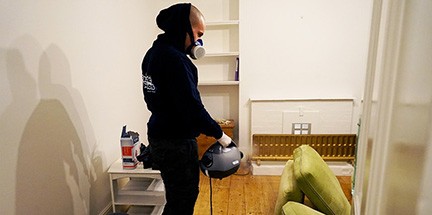 There are a variety of methods to battle house fly infestation. Insecticides, sticky paper and electronic fly zappers. You can also find countless homemade remedies online, although they are not very effective. Zappers won’t do for bluebottle infestations. Sticky paper attracts them but since it doesn’t affect their breeding ground, it doesn’t stop them from reproducing. Professional fly pest control service remains the most effective method to battle flies infestation.
There are a variety of methods to battle house fly infestation. Insecticides, sticky paper and electronic fly zappers. You can also find countless homemade remedies online, although they are not very effective. Zappers won’t do for bluebottle infestations. Sticky paper attracts them but since it doesn’t affect their breeding ground, it doesn’t stop them from reproducing. Professional fly pest control service remains the most effective method to battle flies infestation.
Keep in mind that we only aim to provide facts about flies in general. We cannot guarantee that what you’re dealing with corresponds to the same description.



